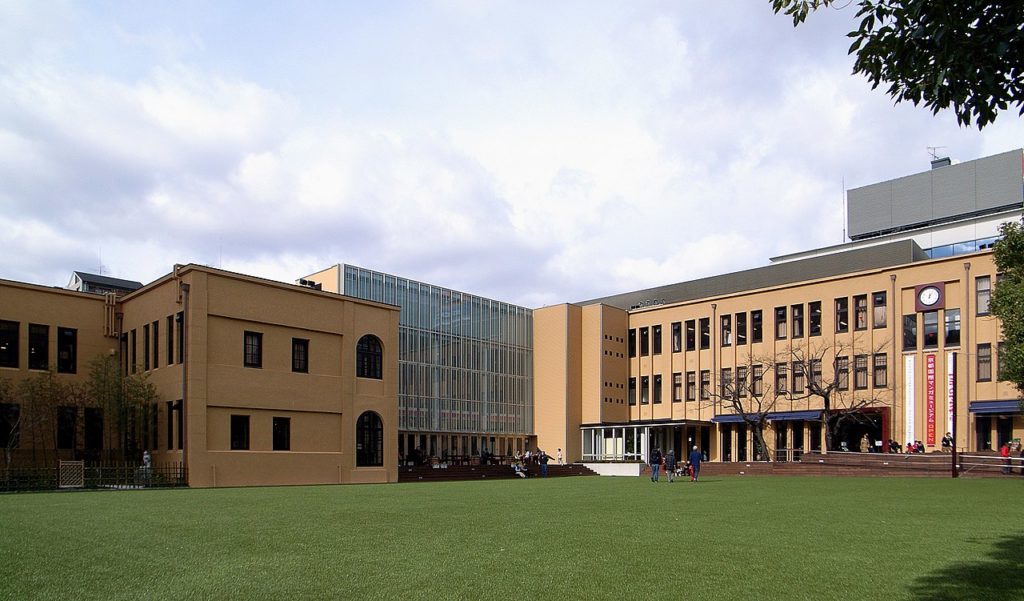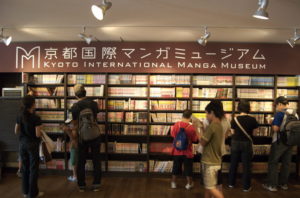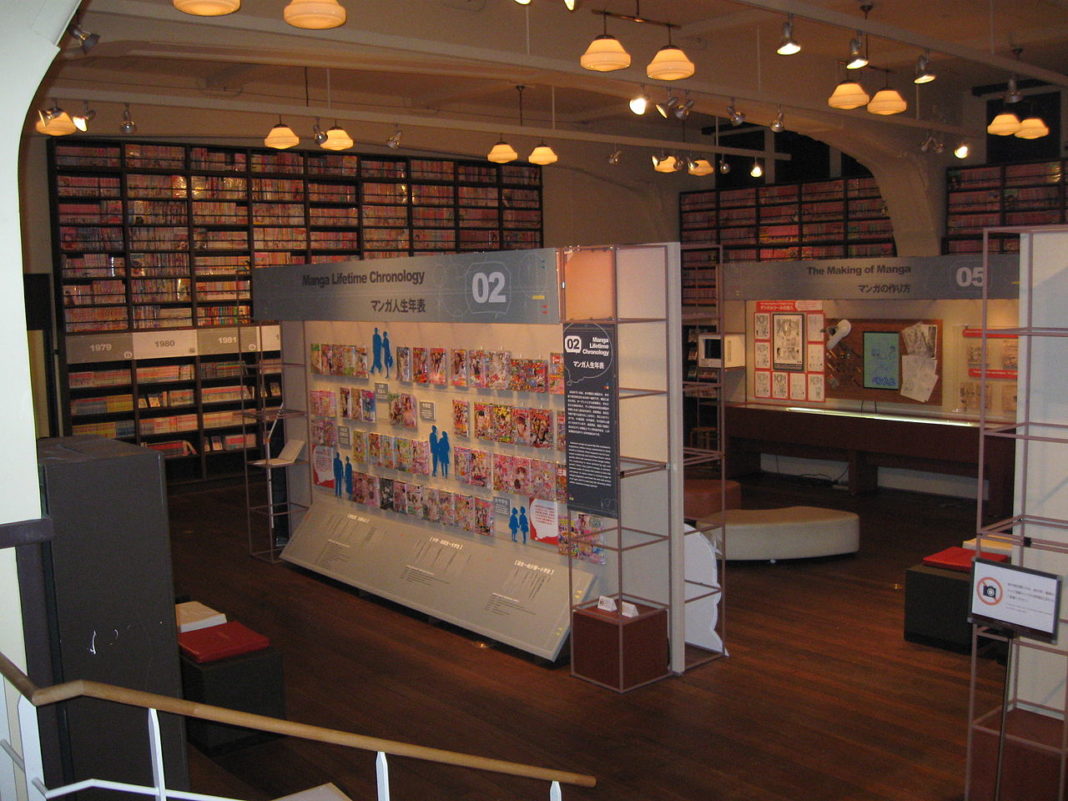The Kyoto International Manga Museum is located in Nakagyō-ku, Kyoto, Japan. The museum is a public–private partnership of Kyoto Seika University and the city of Kyoto.
The city provided the building and land. The university operates the facility under the oversight of a joint committee. The museum acts as a manga library and history resource for the public, as well as serving the manga-related research interests of Kyoto Seika University’s International Manga Research Center.

The museum’s collection includes approximately 300,000 items as of 2016, with 50,000 volumes of manga that can be accessed and read by visitors and approximately 250,000 items in its closed-stack collection, which can be accessed via a dedicated research room supported by reference facilities. Collected materials include Edo period woodblock prints, pre-war magazines, post-war rental books, and popular modern series from around the world.

The museum is divided into a number of public zones. The Gallery Zone is open to the public and contains both permanent and temporary exhibition rooms. The museum also has a Research Zone, an Archive Zone, and community spaces. There is also a Tatsuike Memorial Room, a gift shop, and a tea room. The Wall of Manga, which visitors may freely access, is the main feature of the museum’s collection. It contains approximately 50, 000 publications from the 1970s, most of which were donated from the rental bookstore Okubo Negishi Books. The Wall of Manga is divided by floors: the first floor features shonen manga, the second floor features shojo manga, and the third floor features seinen manga. There is also a children’s library that includes approximately 3,000 picture books.

The museum features several permanent exhibits outside of its manga collection. These include a room of plaster casts of the hands of manga and anime artists who have visited the museum, an exhibition of 100 maiko illustrations by various artists, a hanging sculpture of Tezuka Osamu’s Hi no Tori character, and an exhibition called “What is Manga?” that features influential manga published between 1912 and 2005. There is also a room dedicated to kamishibai, a traditional Japanese storytelling format that uses a combination of characterful narration and hand-drawn paper cards.
According to Wikipedia















